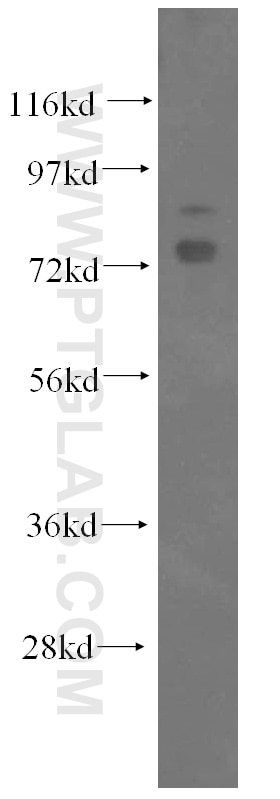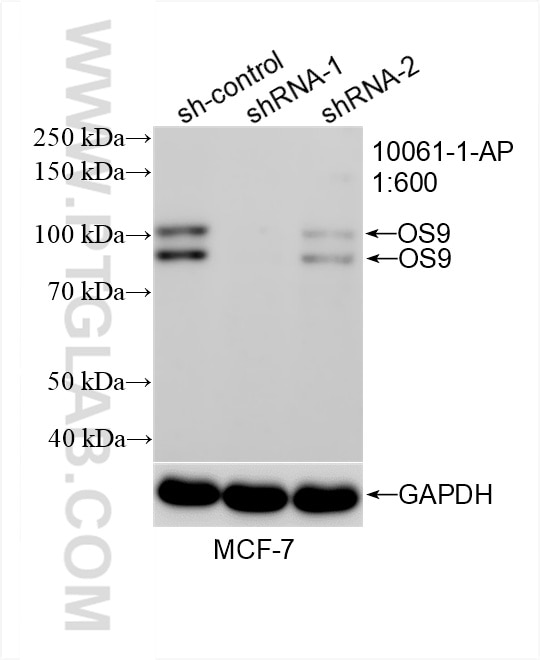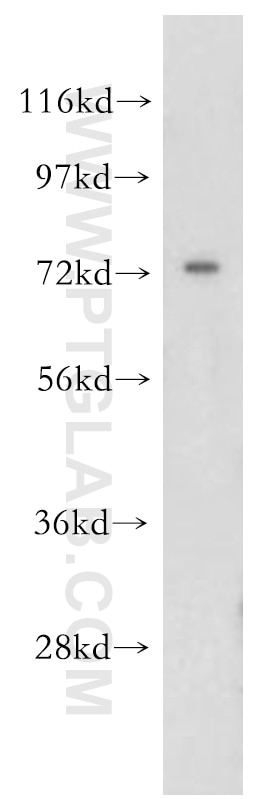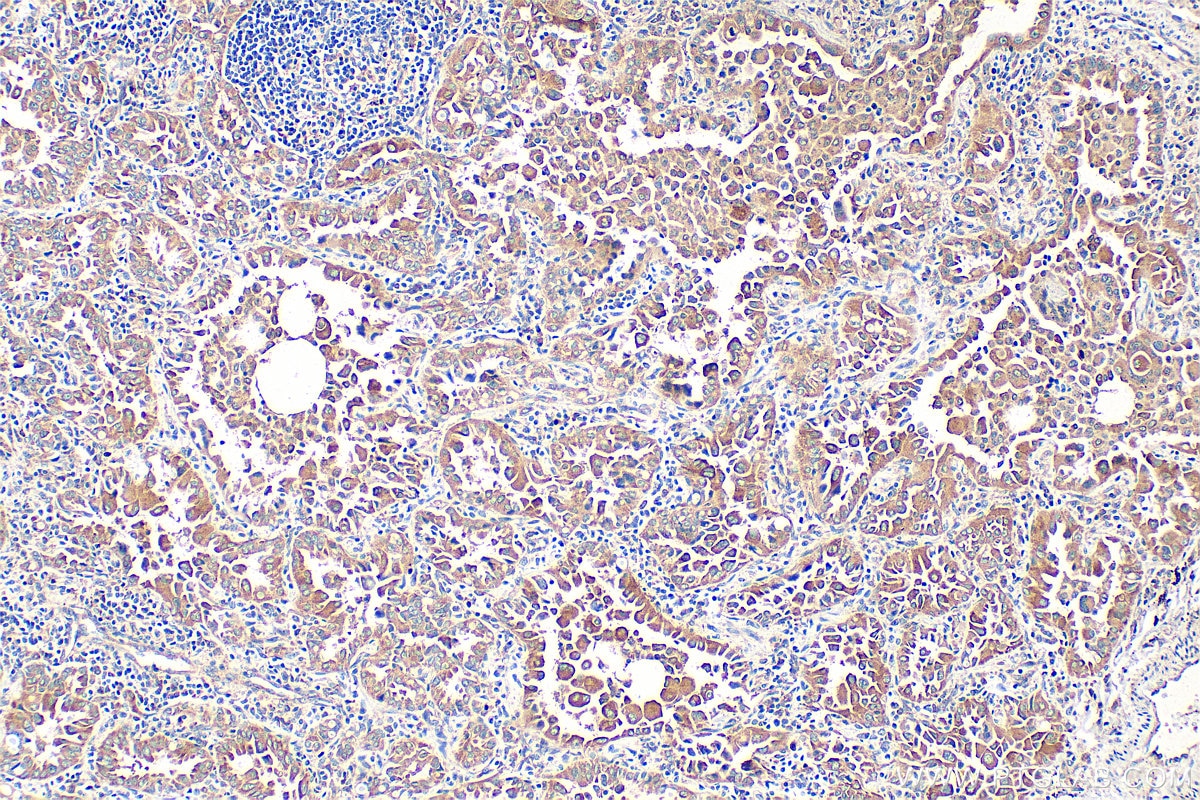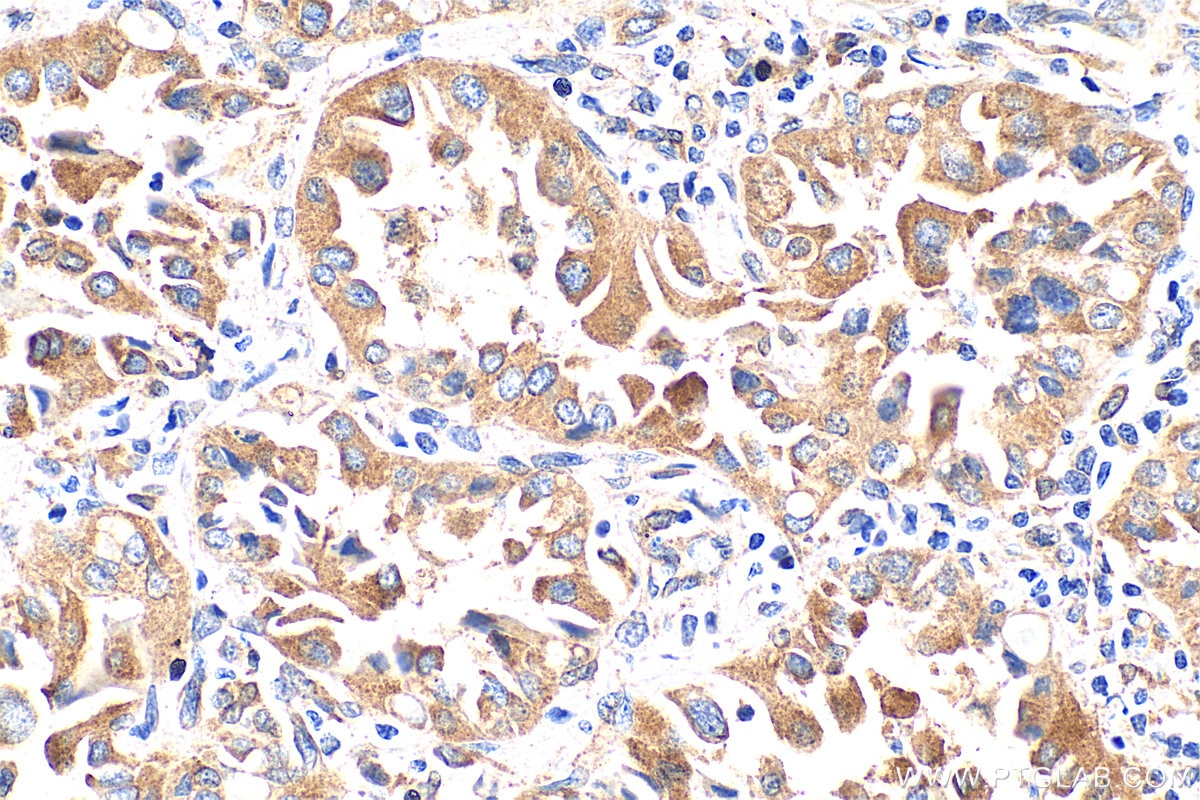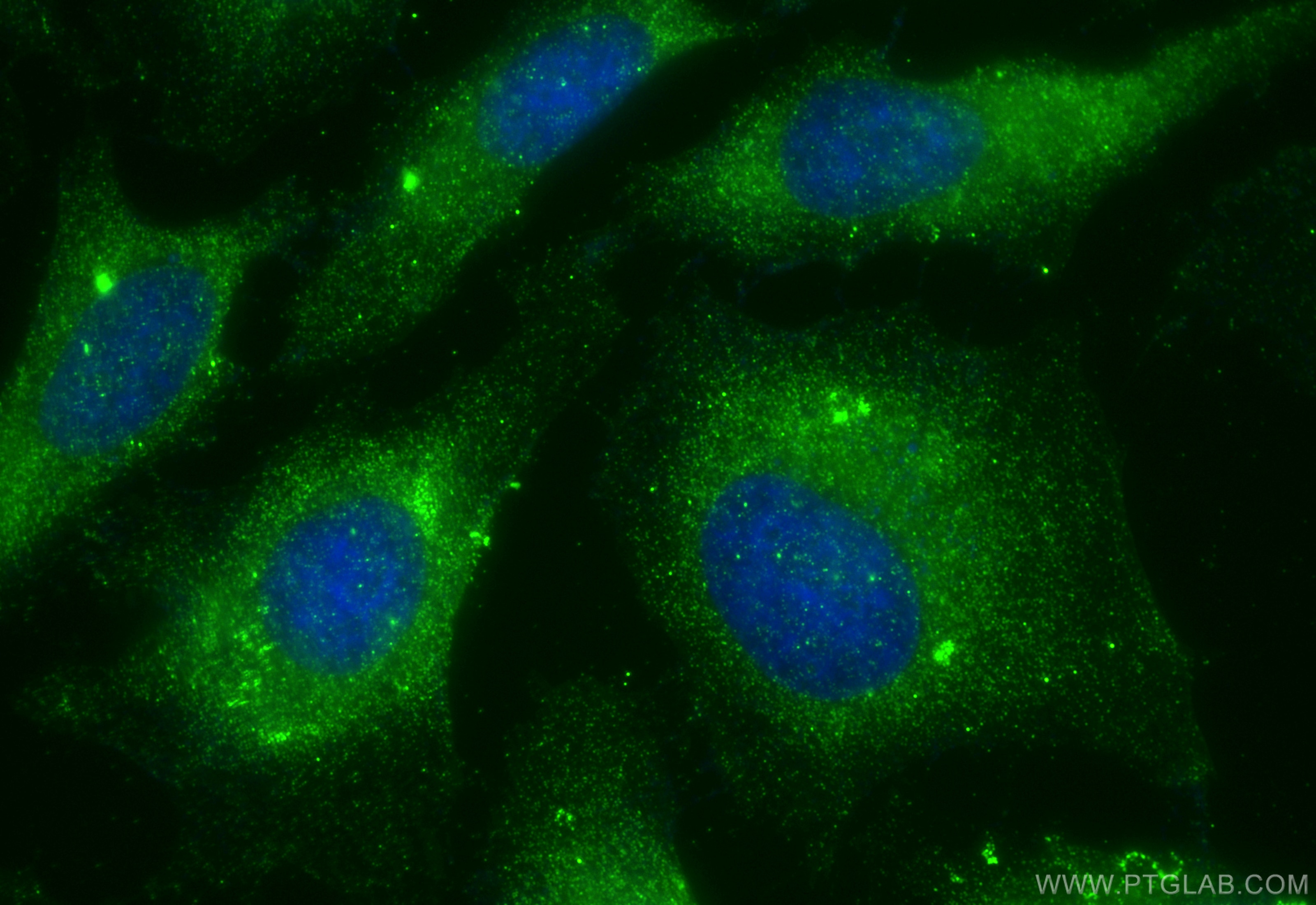- Featured Product
- KD/KO Validated
OS9 Polyklonaler Antikörper
OS9 Polyklonal Antikörper für WB, IHC, IF/ICC, ELISA
Wirt / Isotyp
Kaninchen / IgG
Getestete Reaktivität
human und mehr (1)
Anwendung
WB, IHC, IF/ICC, ELISA
Konjugation
Unkonjugiert
Kat-Nr. : 10061-1-AP
Synonyme
Geprüfte Anwendungen
| Erfolgreiche Detektion in WB | HEK-293-Zellen, HeLa-Zellen, MCF-7-Zellen |
| Erfolgreiche Detektion in IHC | humanes Lungenkarzinomgewebe, humanes Prostatakarzinomgewebe Hinweis: Antigendemaskierung mit TE-Puffer pH 9,0 empfohlen. (*) Wahlweise kann die Antigendemaskierung auch mit Citratpuffer pH 6,0 erfolgen. |
| Erfolgreiche Detektion in IF/ICC | HeLa-Zellen |
Empfohlene Verdünnung
| Anwendung | Verdünnung |
|---|---|
| Western Blot (WB) | WB : 1:200-1:1000 |
| Immunhistochemie (IHC) | IHC : 1:50-1:500 |
| Immunfluoreszenz (IF)/ICC | IF/ICC : 1:200-1:800 |
| It is recommended that this reagent should be titrated in each testing system to obtain optimal results. | |
| Sample-dependent, check data in validation data gallery | |
Veröffentlichte Anwendungen
| KD/KO | See 4 publications below |
| WB | See 10 publications below |
| IF | See 1 publications below |
Produktinformation
10061-1-AP bindet in WB, IHC, IF/ICC, ELISA OS9 und zeigt Reaktivität mit human
| Getestete Reaktivität | human |
| In Publikationen genannte Reaktivität | human, Maus |
| Wirt / Isotyp | Kaninchen / IgG |
| Klonalität | Polyklonal |
| Typ | Antikörper |
| Immunogen | OS9 fusion protein Ag0106 |
| Vollständiger Name | osteosarcoma amplified 9, endoplasmic reticulum associated protein |
| Berechnetes Molekulargewicht | 76 kDa |
| Beobachtetes Molekulargewicht | 73 kDa |
| GenBank-Zugangsnummer | BC000532 |
| Gene symbol | OS9 |
| Gene ID (NCBI) | 10956 |
| Konjugation | Unkonjugiert |
| Form | Liquid |
| Reinigungsmethode | Antigen-Affinitätsreinigung |
| Lagerungspuffer | PBS with 0.02% sodium azide and 50% glycerol |
| Lagerungsbedingungen | Bei -20°C lagern. Nach dem Versand ein Jahr lang stabil Aliquotieren ist bei -20oC Lagerung nicht notwendig. 20ul Größen enthalten 0,1% BSA. |
Hintergrundinformationen
OS-9 is a ubiquitously expressed ensoplasmic reticulum (ER)-associated protein originally identified as being amplified in certain osteosarcomas. It functions in ER quality control and ER-associated degradation (ERAD). There are three isoforms of this protein: OS-9.1, OS-9.2 and OS-9.3. The longest isoform, OS-9.1, contains 667 aa, OS-9.2 lacks aa 535-589, whereas OS-9.3 lacks aa 456-470 and 535-589. OS-9.1 and OS-9.2 are N-glycosylated, ubiquitously expressed in human tissues, and amplified in tumors. Isoform 2 is the major isoform detected in all cell types examined. This antibody can recognize all three isoforms of OS-9.
Protokolle
| PRODUKTSPEZIFISCHE PROTOKOLLE | |
|---|---|
| WB protocol for OS9 antibody 10061-1-AP | Protokoll herunterladen |
| IHC protocol for OS9 antibody 10061-1-AP | Protokoll herunterladenl |
| IF protocol for OS9 antibody 10061-1-AP | Protokoll herunterladen |
| STANDARD-PROTOKOLLE | |
|---|---|
| Klicken Sie hier, um unsere Standardprotokolle anzuzeigen |
Publikationen
| Species | Application | Title |
|---|---|---|
Nat Cell Biol OS-9 and GRP94 deliver mutant alpha1-antitrypsin to the Hrd1-SEL1L ubiquitin ligase complex for ERAD.
| ||
J Biol Chem OS-9 regulates the transit and polyubiquitination of TRPV4 in the endoplasmic reticulum.
| ||
J Biol Chem Human OS-9, a lectin required for glycoprotein endoplasmic reticulum-associated degradation, recognizes mannose-trimmed N-glycans. | ||
J Biol Chem Human XTP3-B forms an endoplasmic reticulum quality control scaffold with the HRD1-SEL1L ubiquitin ligase complex and BiP. | ||
J Biol Chem SEL1L protein critically determines the stability of the HRD1-SEL1L endoplasmic reticulum-associated degradation (ERAD) complex to optimize the degradation kinetics of ERAD substrates.
|
